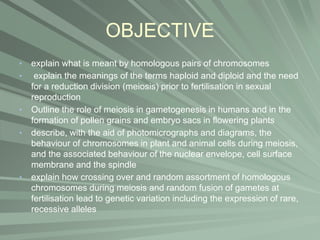The document discusses meiosis, gametogenesis, and genetic variation, explaining the significance of homologous chromosomes, haploid and diploid terms, and the processes that generate genetic diversity through crossing over and independent assortment. It also covers Mendelian genetics, including monohybrid and dihybrid crosses, along with the principles of dominance and recessiveness in alleles. Additionally, it addresses mutations, gene control in prokaryotes, and the specifics of operons, shedding light on the complexities of inheritance and gene expression.


























































































































